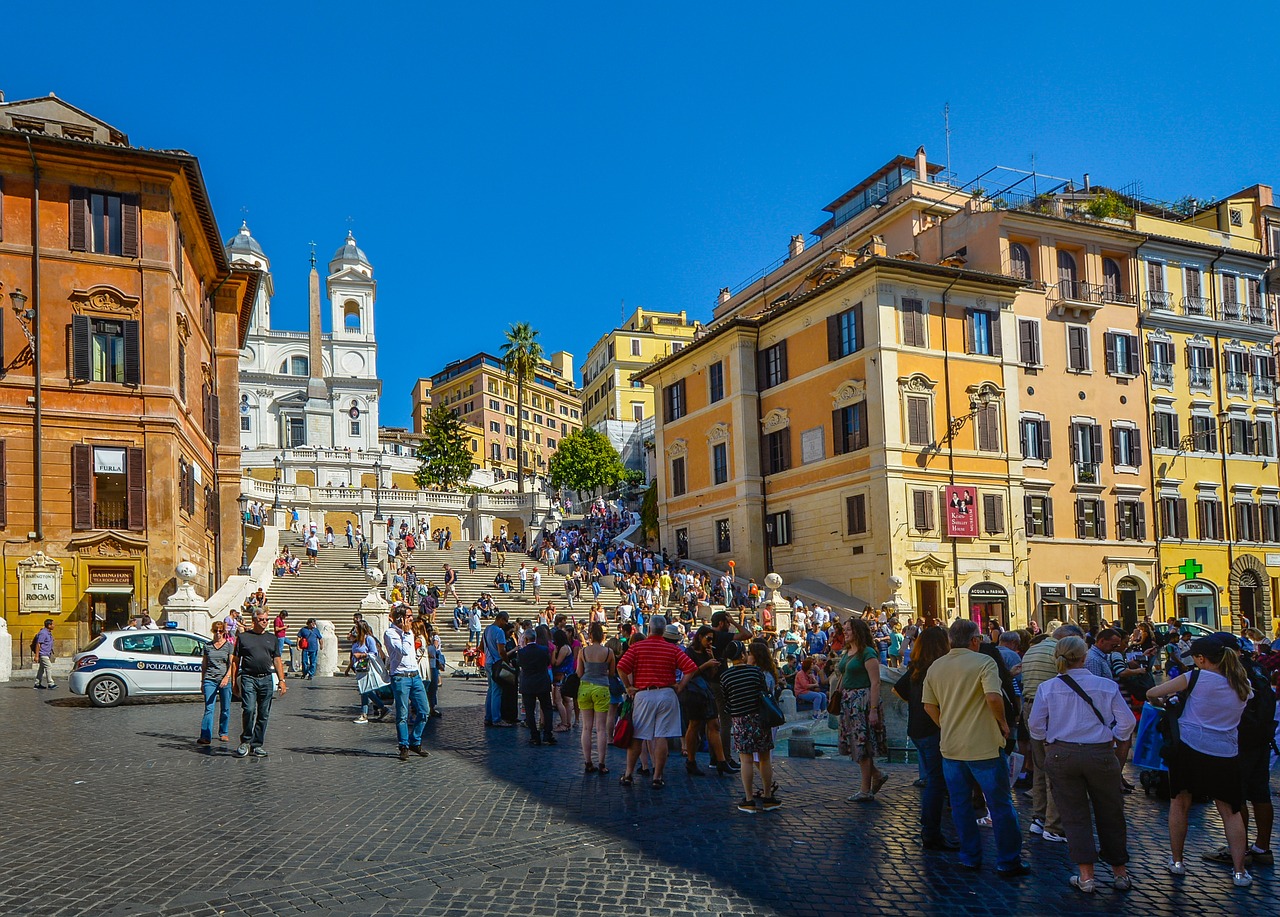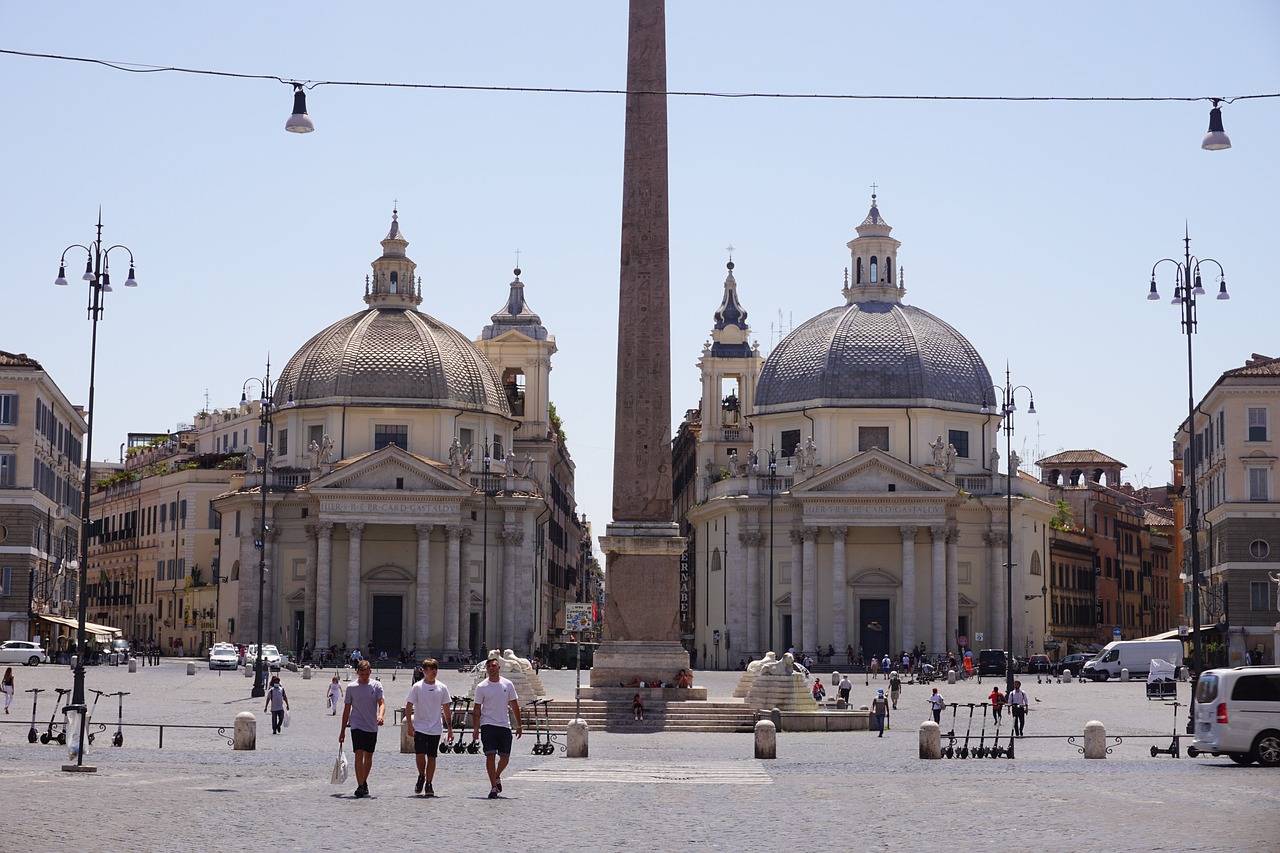Roman squares
Roman squares are like the city's open-air salons, their past and present a complex cocktail of eras, histories and legends.
In ancient times, Rome was enclosed by a wall and was entered from different directions through guarded gates. Travelers from the north reached the Eternal City through the Flaminia Gates, named after the road of the same name built in the III century BC by consul Gaius Flaminius.
The gate, having changed its appearance over the centuries, still exists today, and it is from here that we invite you to take a walk. This is where Rome welcomes its guests, opening its arms "wide" to them. Walking through the gates and into Piazza del Popolo behind them, you get the feeling that the city welcomes you into a huge open-air salon, and gives you a choice of where to go.
Piazza del Popolo - the People's Square - is the northern gateway to Rome. This is the origin of the Roman Trident, the name given to the three streets that, like Neptune's harpoon teeth, emerge from a single point and divide the central part of the city into three parts. Each of the three streets is well worth a stroll and can be taken as a separate route. We invite you to take one of them.
You'll discover the history, legends and myths that still stir the imagination in Piazza del Popolo, walk down the lane where artists, famous and not so famous, once lived, as well as Audrey Hepburn's character from "Roman Holiday", The Spanish Steps in the square of the same name, you will make a wish at the Trevi Fountain, experience the grandeur of antiquity and the continuity of time at the Pantheon and find yourself in the most beautiful square of the Baroque period, Piazza Navona.
Like everything in Rome, Piazza del Popolo is a complex cocktail of eras, stories and legends. Ancient Egypt and Ancient Rome intertwine here, and the ghost of Nero still roams the remains of the ancient wall, banished from his tomb. Crowds of tourists rush to the church of Santa Maria del Popolo to see Caravaggio's masterpiece, rushing past the others. The name of the square hides the memory of the poplars that once grew here, arguing with history about how the people raised money to build the church of Santa Maria del Popolo. The great Bernini tidied up the square, giving it a look worthy of meeting Queen Cristina of Sweden, who chose Rome for her life, and a century and a half later, thanks to Zuseppe Valagna, the square acquired its modern look.
Not far from the piazza, close to the bustling Via Del Corso which attracts shopaholics of all stripes, lurks the quiet, paved Via Margutta: if you don't know where to turn, you'll pass by. But we know, so we go and stand at the door of the house where Federico Fellini and his wife lived, we stare at the windows of antique shops and art studios, and we peek into the courtyard of the palazzo where Picasso worked. And if you're lucky, you'll find a street vernissage, where local artists still exhibit their work.
The silence of Via Margutta gives way to the murmur of Piazza Española: at times the crowds make it difficult to see the fountain in the shape of a sunken boat at the centre of the stairs leading up the hill, at the top of which the Church of the Holy Trinity invites you up to look out over the city below.
There are two more squares ahead, but on the way you should make a wish and throw a coin into the Trevi Fountain on the façade of the Palazzo Poli: Princess Zinaida Volkonskaia used to live here and hosted Nikolai Gogol and other famous guests in her salon.
Once out of the crowd and grabbing a cool gelato on the way, we head to the Pantheon: the power and grandeur of this ancient structure, whose true purpose is still not unanimously agreed, is astonishing. The building, which has miraculously survived for two millennia, invites you to go inside, worship Raphael's tomb and look up into the bottomless Roman sky through the oculus, a hole in the dome.
And at the end you'll be treated to a real triumph: a Baroque triumph. Hidden from view by the buildings, Piazza Navona spreads out on the site of the ancient stadium. At its centre is the Four Rivers fountain by Bernini, the symbol of the might of the Roman Church and its influence in all parts of the world. Ancient athletes, a Christian martyr, architectural geniuses, a powerful pope and his city-hating daughter-in-law - the square holds fascinating stories and its beauty delights the eye. Take a seat on the fence around the fountain: Rome and its secrets await you. Book a tour and enjoy: the views, the stories and the walk!







